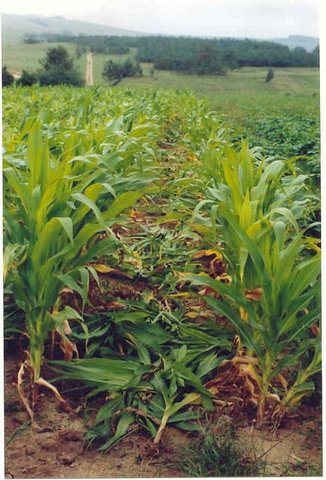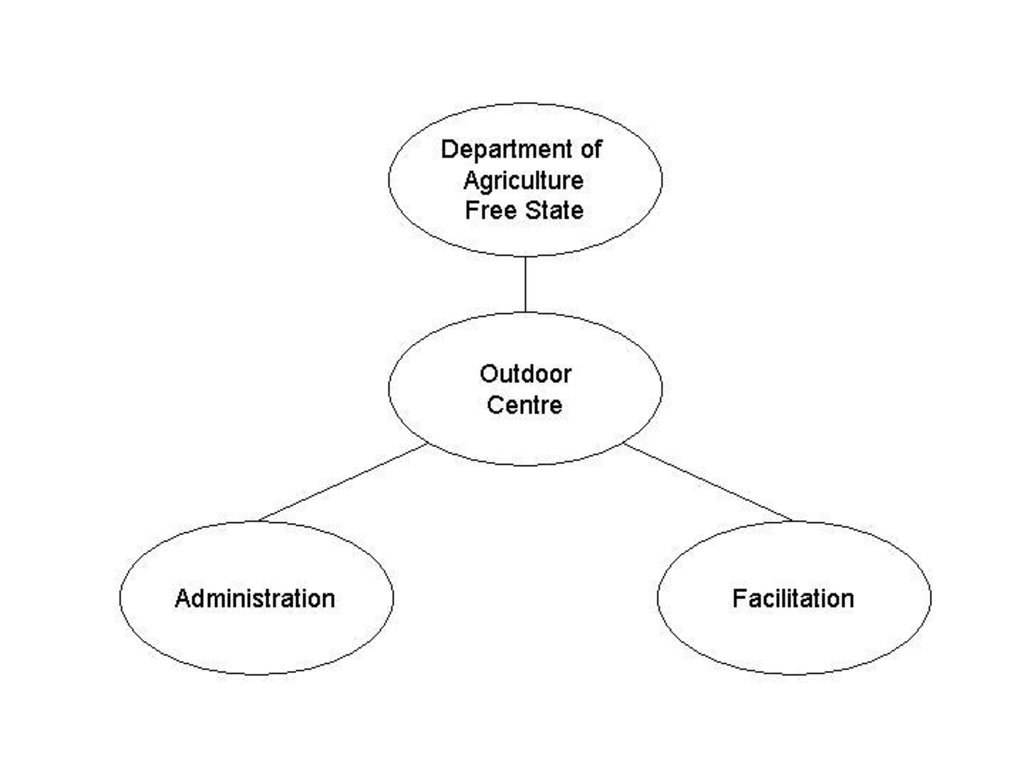Multi-stakeholder LandCare process [南非]
- 创建:
- 更新:
- 编制者: Hendrik Johannes Smith
- 编辑者: –
- 审查者: Fabian Ottiger
Multi-stakeholder process, LandCare, Action research
approaches_2561 - 南非
查看章节
全部展开 全部收起1. 一般信息
1.2 参与方法评估和文件编制的资源人员和机构的联系方式
SLM专业人员:
Hofer Peter
Amt für Landwirtschaft und Natur des Kantons Bern LANAT
Ruetti, 3052 Zollikofen
瑞士
有助于对方法进行记录/评估的机构名称(如相关)
Amt für Landwirtschaft und Natur des Kantons Bern (LANAT) - 瑞士1.3 关于使用通过WOCAT记录的数据的条件
编制者和关键资源人员接受有关使用通过WOCAT记录数据的条件。:
是
1.4 SLM技术问卷的参考

Conservation Agriculture [南非]
Conservation agriculture included aspects such as crop rotation, mulching and no-tillage.
- 编制者: Hester Gertruida Jansen van Rensburg
2. SLM方法的描述
2.1 该方法的简要说明
A multi-stakeholder approach using action research methodologies to implement conservation agriculture
2.2 该方法的详细说明
该方法的详细说明:
Aims / objectives: - To develop and diffuse conservation agriculture technologiy
- To develop capacity among stakeholders
- To improve soil health
- To reverse soil degradation
Methods: - Training of trainers, i.e. lead farmers and extension worker
- Awareness events, e.g. farmer days, field days
- On-farm experimentation
- Farmer-to-farmer extension
- Local institutionalization
- Partnerships Monitoring and Evaluation
Stages of implementation: 1. Stakeholder analysis
2. Diagnosis / Situation analysis
3. Planning and design
4. Implementing and management
5. Learning and adopting
6. Exit strategy
Role of stakeholders: Researchers: - facilitators, advisors, trainers, management of trials
Extension worker:- advisors, trainers
Lead farmers: Trainers for other farmers, awarenes builders, on-farm: leaders of farmer managed trials/experiments, facilitators for learning groups
Other important information: Other stakeholders, e.g. input suppliers are also important and need to be involved at various stages and events
2.5 采用该方法的国家/地区/地点
国家:
南非
区域/州/省:
South Africa / KwaZulu-Natal
有关地点的进一步说明:
Bergville / Emmaus Ward
2.6 该方法的开始和终止日期
注明开始年份:
2000
终止年份(若不再采用该方法):
2006
2.7 方法的类型
- 基于项目/方案
2.8 该方法的主要目的/目标
The Approach focused on SLM only
Build capacity among key stakeholders Change traditional practices to conservation agriculture practices Build strong local institutions (learning groups) Improve experimental skills Improve soil health
The SLM Approach addressed the following problems: Soil erosion Soil fertility and -acidity Poverty / food security Lack of knowledge and skills Poor / weak local institutions
2.9 推动或妨碍实施本办法所适用的技术的条件
财务资源和服务的可用性/可得性
- 阻碍
Lack of capital inputs
Treatment through the SLM Approach: Groups save money to buy inputs in bulk
机构设置
- 阻碍
Poor local institutions, poor leadership
Treatment through the SLM Approach: Building capacity in learning groups to learn and adapt / develop leadership / facilitation skills
法律框架(土地使用权、土地和水使用权)
- 启动
The existing land ownership, land use rights / water rights moderately helped the approach implementation: Helped ot introduce grazing system that promotes rotational grazing, which is a major new approach for communal grazing.
3. 相关利益相关者的参与和角色
3.1 该方法涉及的利益相关者及其职责
- 当地土地使用者/当地社区
Different cultural roles and attitudes between men and women. Women were better performers in training others; women were easier trained than men
- NGO
- 国家政府(规划者、决策者)
- 国际组织
3.2 当地土地使用者/当地社区参与该方法的不同阶段
| 当地土地使用者/当地社区的参与 | 指定参与人员并描述活动 | |
|---|---|---|
| 启动/动机 | 无 | Farmers were interviewed during the informal semi-structured survey |
| 计划 | 无 | |
| 实施 | 互动 | Lead farmers were part of implementing team; were responsible for farmer-to-farmer extension |
| 监测/评估 | 互动 | Were fully involved in most monitoring and evaluation activities |
| Research | 互动 | Lead farmers were responsible for farmer mangaed trials |
3.3 流程图(如可用)
3.4 有关SLM技术选择的决策
具体说明谁有权决定选择要实施的技术:
- 主要是土地使用者,由SLM专家提供支持
解释:
Decisions on the method of implementing the SLM Technology were made by mainly by SLM specialists with consultation of land users
4. 技术支持、能力建设和知识管理
4.1 能力建设/培训
是否为土地使用者/其他利益相关者提供培训?:
是
明确受训人员:
- 土地使用者
培训形式:
- 示范区域
- 课程
涵盖的主题:
Conservation agriculture principles, communication, visionry, training, value adding
4.2 咨询服务
土地使用者有权使用咨询服务吗?:
是
指明是否提供了咨询服务:
- 在土地使用者的土地上
说明/注释:
Name of method used for advisory service: Multi-stakeholder process using action research; Key elements: Monitoring and evaluation / experiments, Training of farmers, Farmer-to-farmer extension
Advisory service is quite adequate to ensure the continuation of land conservation activities; Have been empowered quite successfully with project
4.4 监测和评估
监测和评估是该方法的一部分吗?:
是
注释:
bio-physical aspects were regular monitored through measurements; indicators: Soil health
technical aspects were regular monitored through measurements; indicators: Conservation agriculture principles adopted
socio-cultural aspects were regular monitored through observations; indicators: Changes in SKA
economic / production aspects were regular monitored through measurements; indicators: Yield & gross margin
area treated aspects were regular monitored through observations; indicators: Area
no. of land users involved aspects were regular monitored through measurements; indicators: Number of farmers trained
management of Approach aspects were None monitored through measurements; indicators: Number of farmers using tools for adaptive management
There were many changes in the Approach as a result of monitoring and evaluation: Monitoring and evaluation was the main methodology used to induce change to focus, improve and integrate project management. Land users learned to use monitoring and evaluation tools to improve their learning in groups as well as their adaptive management capacity.
4.5 研究
研究是该方法的一部分吗?
是
提供进一步的细节,并指出是谁做的研究:
Action research through monitoring and evaluation; applied at different levels; used various tools and technologies to apply it. Action research was used to improve, focus and integrate project strategies
Research was carried out on-farm
5. 融资和外部物质支持
5.1 该方法中SLM组成部分的年度预算
如果不知道准确的年度预算,请给出一个范围:
- 10,000-100,000
注释(例如主要的资助来源/主要捐助者):
Approach costs were met by the following donors: government (LandCare programme,90%, Research programme 10%): 100.0%
5.2 为土地使用者提供财政/物质支援
土地使用者是否获得实施该技术的财政/物质支持?:
是
5.3 对特定投入的补贴(包括劳动力)
- 设备
| 具体说明哪些投入得到了补贴 | 程度如何 | 对补贴做出具体说明 |
|---|---|---|
| 机械 | 充分融资 | |
| 工具 | 充分融资 | |
- 农业
| 具体说明哪些投入得到了补贴 | 程度如何 | 对补贴做出具体说明 |
|---|---|---|
| 种子 | 部分融资 | |
| 化肥 | 部分融资 | |
如果土地使用者的劳动力是一项重要的投入,那么是不是:
- 自愿
注释:
Only labour on main trial was paid in cash, other was voluntary
5.4 信用
是否根据SLM活动的方法给予信用值?:
否
6. 影响分析和结论性陈述
6.1 方法的影响
该方法是否帮助土地使用者实施和维护SLM技术?:
- 否
- 是,很少
- 是,中等
- 是,支持力度很大
Conservation agriculture pronciples: no-till, mulching, multiple cropping, using special implements
Did other land users / projects adopt the Approach?
- 否
- 是,很少
- 是,中等
- 是,支持力度很大
Aim is to scale-out approach to other projects/ programmes.
Did the Approach help to alleviate poverty?
- 否
- 是,很少
- 是,中等
- 是,支持力度很大
They achieved food security status; could sell some products and some of the value added products
6.3 方法活动的可持续性
土地使用者能否维持通过该方法实施的措施(无外部支持的情况下)?:
- 是
6.4 该方法的长处/优点
| 土地使用者眼中的长处/优势/机会 |
|---|
| Have higher level of knowledge and skills (How to sustain/ enhance this strength: Through experimentation, communication forums, field days, training courses) |
| Better contact with outside stakeholders - improved networks (How to sustain/ enhance this strength: Frequent stakeholder forums) |
| Higher status of lead farmers and their groups (How to sustain/ enhance this strength: Continuous contact and use of lead farmers' experience and capacity) |
| Improved food security through collective action (How to sustain/ enhance this strength: Monitoring and evaluation of sustainable land management practices) |
| Improved communication between land users (How to sustain/ enhance this strength: Frequent local action forums) |
| 编制者或其他关键资源人员认为的长处/优势/机会 |
|---|
| Empower key stakeholders (How to sustain/ enhance this strength: Frequent stakeholder forums / meetings / workshops) |
| Help people 'learn how to learn' (How to sustain/ enhance this strength: Provide them with learning tools (monitoring and evaluation) and skills) |
| Promote a culture of adoptive management (How to sustain/ enhance this strength: Build their capacity through monitoring and evaluation tools and processes) |
| Develop a capacity to experiment among farmers (How to sustain/ enhance this strength: Facilitate and promote experiments through agricultural research) |
| Develop self-reliant local institutions and leadership (How to sustain/ enhance this strength: Develop local capacity to lead and facilitate learning groups) |
7. 参考和链接
7.1 方法/信息来源
- 实地考察、实地调查
- 与土地使用者的访谈
7.2 参考可用出版物
标题、作者、年份、ISBN:
Amt für Landwirtschaft und Natur des Kantons Bern LANAT, Ruetti, 3052 Zollikofen. Kanton Bern fördert Ressourcen schonenden Ackerbau.AGRARForschung 14 (3): 128-133, 2007
可以从哪里获得?成本如何?
http://www.vol.be.ch/site/lanat-3155-mbressourcen.pdf
链接和模块
全部展开 全部收起链接

Conservation Agriculture [南非]
Conservation agriculture included aspects such as crop rotation, mulching and no-tillage.
- 编制者: Hester Gertruida Jansen van Rensburg
模块
无模块


